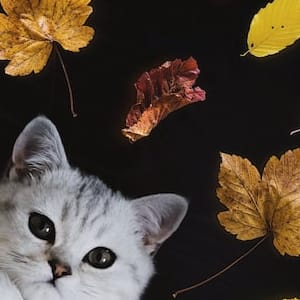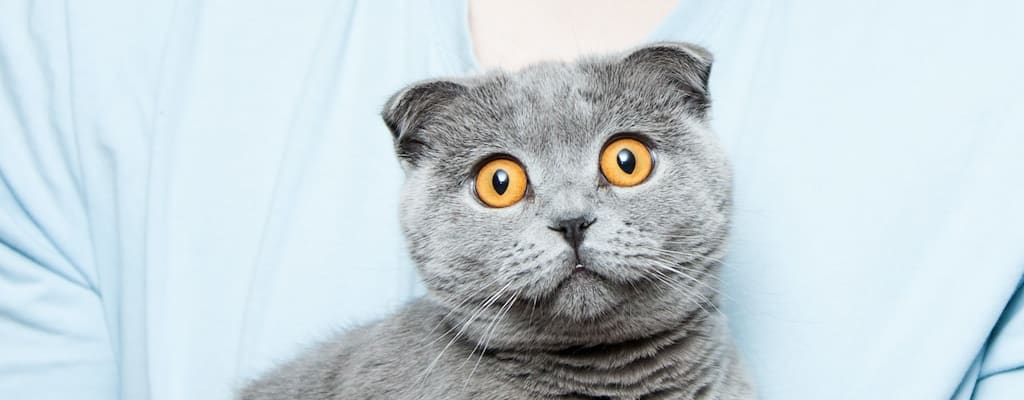see which way the cat jumps: Idiom Meaning and Origin
What does ‘see which way the cat jumps’ mean?
The idiom "see which way the cat jumps" means to wait and see how a situation develops before making a decision or taking action.

Idiom Explorer
The idiom "see yellow" means to become angry or irritable, often due to a frustrating or annoying situation.
The idiom "see things" means to perceive or experience something in a particular way, often different from reality. It implies a subjective understanding or interpretation of a situation or event.
The idiom "see the elephant" means to experience something thrilling or unexpected, often with negative consequences or hardships.
The idiom "seeing is believing" means that someone is more likely to believe something when they see it with their own eyes, rather than simply hearing about it or being told about it by someone else.
The idiom "see for oneself" means to personally witness or experience something in order to form an independent opinion or judgment, rather than relying on others' accounts or information.
The idiom "roll the dice" means to take a risk or make a decision without knowing the outcome or consequences.
One idiom that is commonly used in American English is "roll the dice." This phrase is often used to describe taking a chance or making a risky decision. The origin and meaning of this idiom can be explored to gain a deeper understanding of its usage.
The idiom "raise the flag and see who salutes" means to take action or make a bold statement to test people's reactions or loyalty, and see who responds positively or supports it.
The idiom "put one foot in front of the other" means to continue moving forward, especially in the face of challenges or difficult circumstances, by taking one step at a time.
The idiom "play for time" means to delay taking action in order to gain more time or to avoid making a decision immediately.
FAIL
"See which way the cat jumps" is an idiom that has gained popularity in the English language. It is commonly used to describe the act of waiting to see what decisions or actions others will make before determining one's own course of action. The phrase is often used in situations where uncertainty or ambiguity surrounds a particular situation, and individuals opt to observe the actions or choices of others to gain insight or advantage.
The idiom "look before one leaps" can be seen as a related phrase. Both idioms emphasize the importance of gathering information and assessing the situation before taking action. While "see which way the cat jumps" suggests observing others' actions to make an informed decision, "look before one leaps" highlights the need to carefully consider the potential risks and consequences before making a move.
The origin and etymology of this idiom remain obscure. Despite extensive research and analysis, no concrete explanations have been found regarding its specific origins. It is important to note that the lack of certainty does not diminish the idiom's significance or common usage.
One possibility is that the idiom draws inspiration from the unpredictable and independent nature of cats. Cats, known for their agile and spontaneous behavior, can swiftly change direction or jump unpredictably. This characteristic may be metaphorically related to the concept of waiting to determine the best course of action based on observing others, much like waiting to see how a cat will jump.
Alternatively, this idiom could be related to the observation that when a cat jumps, it often lands facing the same direction as the object it jumped upon. This behavior could symbolize the idea of aligning oneself in the same direction as others or following their lead.
The idiom "look what the cat's dragged in" can also be connected to "see which way the cat jumps". While "see which way the cat jumps" focuses on observing others' actions to inform one's decision-making, "look what the cat's dragged in" highlights the unexpected or uninvited arrival of someone or something. Both idioms emphasize the element of surprise or unexpectedness, albeit in different contexts.
While the exact origin of the idiom remains uncertain, its meaning and usage are well-established in contemporary English. The phrase is commonly used in informal conversations and more formal settings alike, allowing individuals to express caution, prudence, or a desire to gather information before making a decision.
The versatility and adaptability of the idiom contribute to its popularity, as it can be applied to various situations. Whether in personal relationships, business dealings, or political scenarios, individuals can use the phrase "see which way the cat jumps" to convey their intention of analyzing others' behavior before finalizing their own actions.
Furthermore, the idiom can also imply a certain level of strategic thinking, as observing the actions and choices of others provides an opportunity to foresee potential outcomes and adjust one's own plans accordingly. In a competitive or uncertain environment, this approach can be advantageous in avoiding risks or exploiting opportunities.
As with many idioms, this phrase exhibits cultural relevance and reflects the intricacies of human communication. It suggests the underlying complexities of decision-making processes and highlights the significance of observing the behavior of others before committing to a particular course of action.
While the idiom "see which way the cat jumps" continues to be widely used, its elusive origins contribute to its enduring appeal. This idiom invites speculation and contemplation, leaving room for interpretation and personal reflection. Its exact origins may remain an enigma, but its enduring popularity and application in various contexts solidify its position as a valuable and meaningful idiom in the English language.
Example usage
Examples of how the idiom *see which way the cat jumps* can be used in a sentence:
- I don't want to make a decision just yet, I want to see which way the cat jumps before I commit.
- The politician is carefully watching the public's reaction to the new policy to see which way the cat jumps.
- Before deciding on a career change, Jane wants to see which way the cat jumps by researching job opportunities and market trends.
More "Anticipation" idioms

